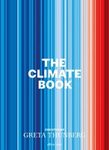"Woodworth gives a stirring portrait of the hardworking environmentalists who are trying to restore landscapes to their former, untouched glory, but he also captures the dark side of the enterprise: it sometimes requires the brutal destruction of very large numbers of invasive species to make room for long-departed native ones. Restoration is also basically guesswork, Woodworth notes, because most of us have never actually experienced nature at its most pristine. Ultimately, he ends up wondering whether we can ever hope to restore 'degraded ecosystems, and our own damaged relationship to the environment.'"
– Scientific American
"An incisive analysis of the ethics and philosophy behind restoration ventures around the world [...] A comprehensively researched and eloquently written work."
– Irish Examiner
"A scholarly and most informed account of the current state of restoration ecology [...] Essentially the book is an excellent critique of science at work."
– South African Journal of Science
"Woodworth provides delightful descriptive passages about his travels, which balance the theory-heavy sections. An important text for scientists and policy makers as well as laypersons with an interest in supporting biodiversity on our planet."
– Publishers Weekly
"[...] This book is about restoration projects all over the world but as seen by a journalist rather than a scientist, and it does present a quite different picture of what can and is being achieved. This book is not really meant for ecologists – although I believe many could gain greater insight from reading it – but for the more general public with an interest in natural history and sustainability. He writes very fluently yet has taken the trouble to provide both a glossary and chapter notes throughout the volume that allow the reader to see the sources of his information.[...] .His enthusiasm for the work is clearly evident and his broader view of the problems than the simply scientific makes for a very readable and interesting volume."
– David Walton, The BES Bulletin 45(2), June 2014
"Outstanding: Paddy Woodworth has opened a broad and major window to the world of ecosystem restoration and its restoration biologists, for those of us who do it, know it, and the public who needs it. He does this by actually taking the time to meet the practitioners, users and evaluators of restoration projects and their aftermaths, and cast a reporter's unjaundiced commentary about them. Woodworth understands, documents, and dissects the mandatory integration of the restoration project with its users, its producers and its likely future fate. He does this not by counting how many species of birds or trees are present or absent, but through unveiling the normal synergies – and antagonisms – that exist among any array of humans focused on a particular 'solution' to a biologically destructive assault on the wild world. The single largest problem with restoration, and Woodworth knows and portrays this problem very well, is persuading some significant portion of society to stop the assault that generated the need for restoration, let nature take possession again of the site and its processes, and stimulate the next generation to allow the continuity of that non-human possession. Sure, this is the world through Woodworth's glasses, but that is what writing is all about [...] marvelous prose."
– Daniel Janzen, University of Pennsylvania
"This is a great piece of investigative journalism, based on extensive research in many countries, on a topic vital to the future of people and biodiversity on Earth. Paddy Woodworth has captured the spirit and detail of contemporary ecological restoration, its strengths, weaknesses, controversies, and especially its message of hope. I would commend this book to all interested in the challenge of devising new ways of sustainably living with biodiversity in a rapidly changing world."
– Stephen D. Hopper, University of Western Australia
"Restoration ecology is a new science and a new human endeavour. Everyone can agree on the importance of its mission: to understand ecosystems well enough to heal wounds inflicted by a flawed but well-meaning species (us). But not everyone agrees on how this can best be done. In this book Paddy Woodworth beautifully describes the earliest successes and failures, the fundamental arguments of theory and practice, of what may be the most important discipline on earth – reconciling people to nature through positive and thoughtful interaction. Only a journalist could navigate the technical arguments, the philosophical contradictions, the strong personalities and the political polarities that now define and affect restoration ecology. He may well be a Herodotus chronicling the birth of a hopeful new world."
– Bruce Pavlik, head of restoration ecology, Royal Botanic Gardens, Kew
"In framing a new contract with nature, restoration ecology is evolving, diverse and often fraught with human tensions. On American prairies, in South African bush, on the peatlands of Ireland, it must wrestle with shifting cultural, political and economic mores. With his wide and robust reportage and analysis, Paddy Woodworth gives a superb overview of how this great new ambition is working out on the ground."
– Michael Viney, author of Ireland: A Smithsonian Natural History
"From ultralight pilots teaching young whooping cranes how to migrate the length of a continent through to ecologists using truckloads of waste orange pulp to reinstate tropical dry forest, Woodworth takes us on a global odyssey of efforts to heal what Aldo Leopold termed our world of wounds. An informative, balanced, and ultimately uplifting dissection of the promise, the politics and the prospects of ecological restoration."
– Andrew Balmford, author of Wild Hope: On the Front Lines of Conservation Success

































